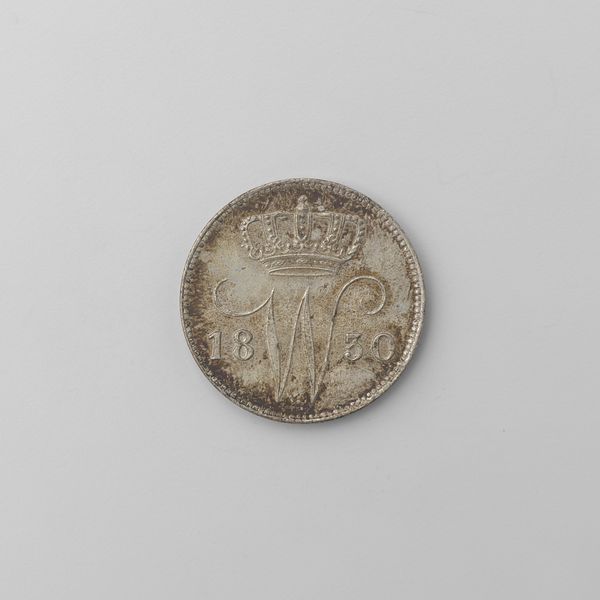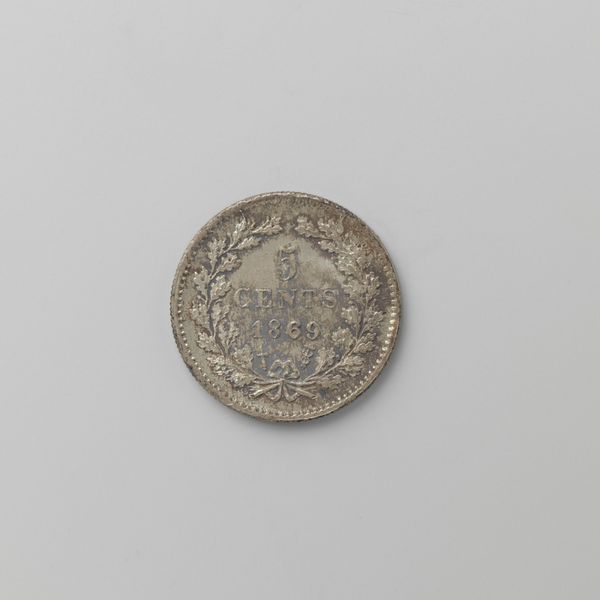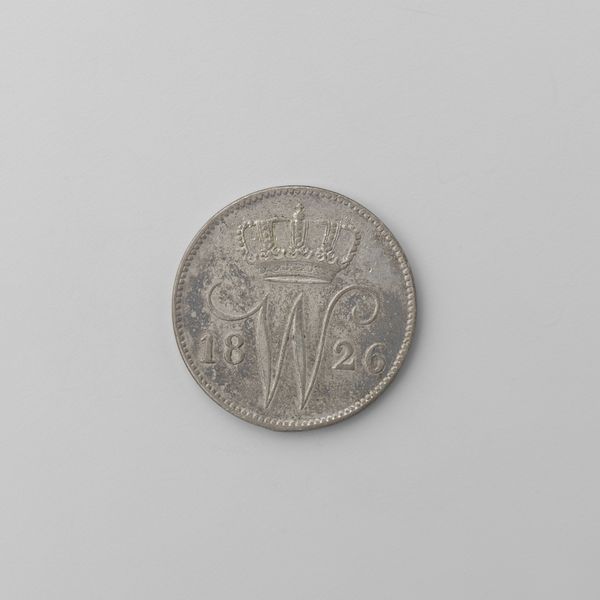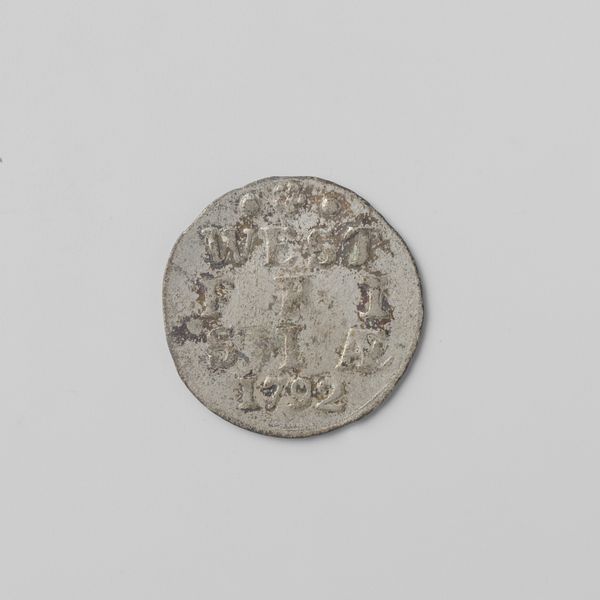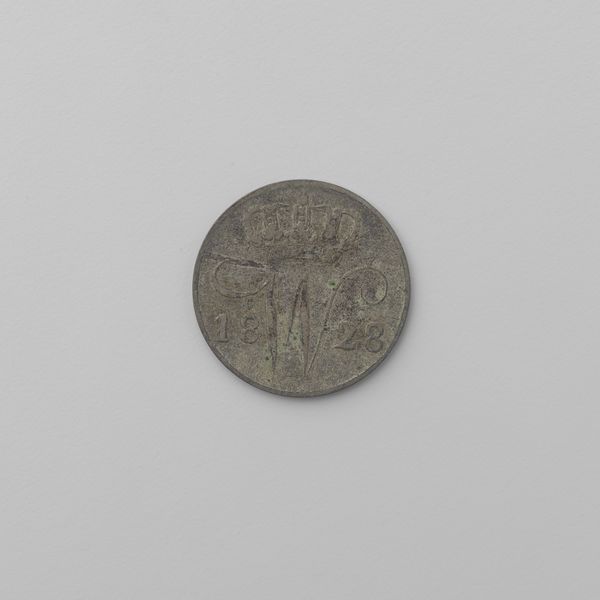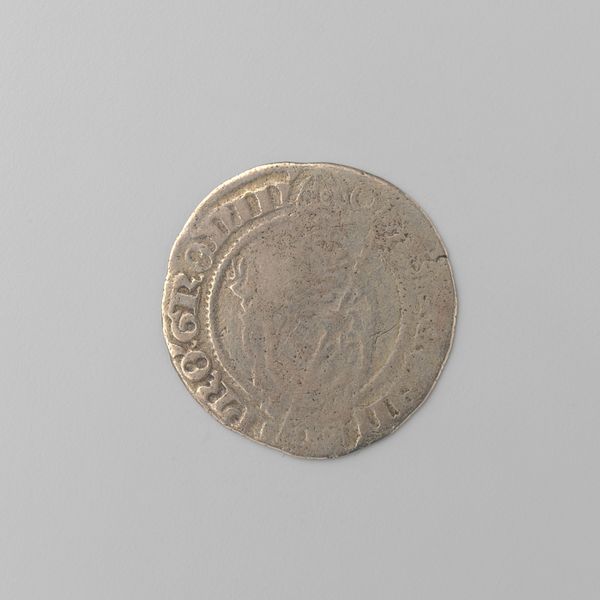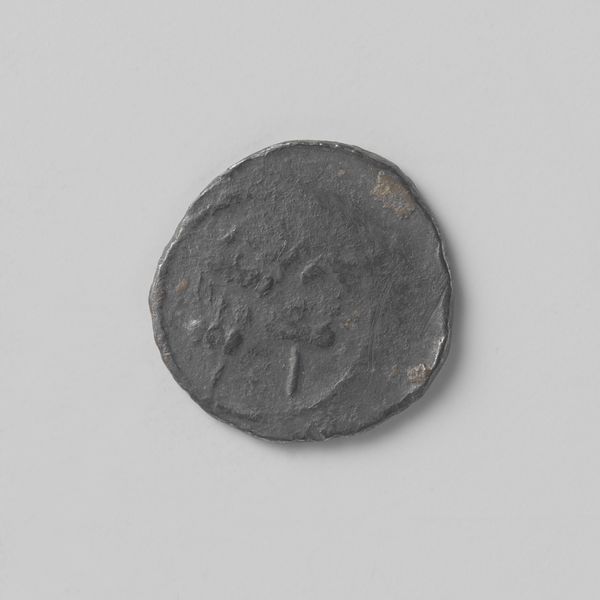
metal, photography
#
portrait
#
studio photography
#
product studio photography
#
product shot
#
antique finish
#
rounded shape
#
metal
#
polished
#
curved arc
#
photography
#
wash background
#
embossed
#
metallic object render
Dimensions: diameter 1.8 cm, weight 1.68 gr
Copyright: Rijks Museum: Open Domain
This ten-cent coin was produced in the Netherlands in 1827, under the authority of King Willem I. Made of solid silver, the coin's production involved several processes: the smelting and refining of the metal, the die-striking of the image, and finally the milling of the coin's edge to deter counterfeiting. This was a moment when industrialization was just beginning to impact such processes. Though still requiring skilled labor, coin production was becoming more efficient, part of a broader shift towards a money-based economy. Note the prominent ‘W’ surmounted by a crown, asserting royal power over economic activity. But also consider the sheer quantity of these coins that were produced, each one a small token enabling countless transactions. Ultimately, this humble object reflects the profound relationship between materials, labor, and the centralized systems of power and finance that define modern life.
Comments
No comments
Be the first to comment and join the conversation on the ultimate creative platform.

